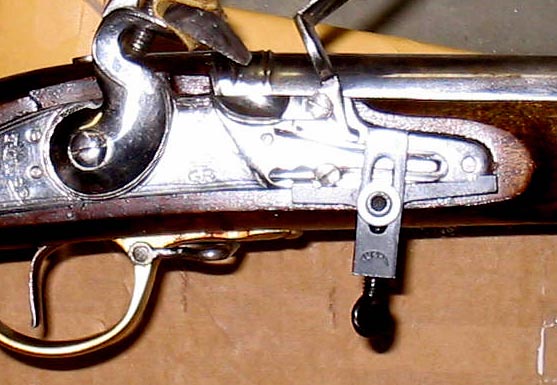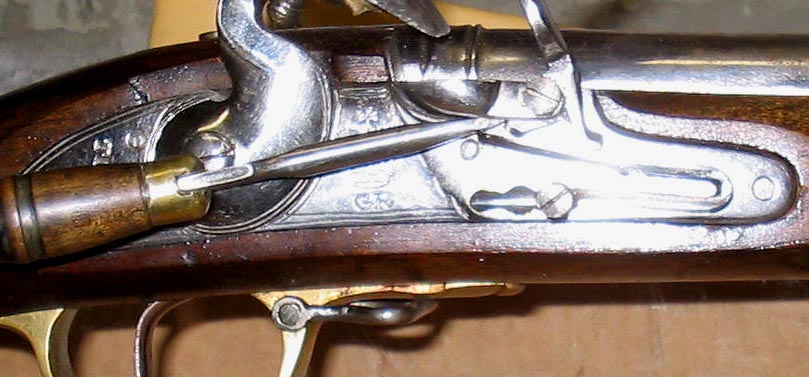| |
|
|
|
|
This little brass thing that came with your musket is a flashguard. They are sort of a pain, but are required by pretty much every reenactment group out there so you don't burn the guy next to you with the flash in your pan. What it does instead is deflect the flash back into your own face.
The guard on the left has had the tab removed to mount to a Brown Bess musket, the one on the right still has the tab. What the tab does is keep the guard from swinging down out of the way when you fire. On French muskets with brass pan bridles, if you tighten the screw enough to hold the guard in place properly it will bend the bridle and jam your frizzen shut, so the tab keeps it in place without overtightening the screw.
|

|
| |
|
|
|
|
Before removing the frizzen screw, you MUST first remove the tension from the frizzen spring or you will damage the frizzen screw. No excuses!!!
There are several ways to do this. In this photo you can see a spring vise in use. Not everyone has a spring vise. We sell an authentic reproduction of an 18th century vise, the one in this photo is a modern one from Track of the Wolf. I carry three or four of them with me in my gunsmith's tool box because I find they are always in use.
|

|
Another way to remove the tension on the frizzen spring is to use a screwdriver. First, put the frizzen in the "fired" position, then slowly pull it back. Just before the frizzen reaches the closed position, you will notice that the spring reaches it's maximum compression. Stick a screwdriver or something similar between the pan and the spring, then push the frizzen forward again until it flops around loose. The spring tension has now been transferred to the pan by way of the screwdriver
| |
|
|
|
|
. |

|
| |
|
|
|
|
Once you have the tension taken off of the frizzen spring, then you can go ahead and remove the frizzen screw. Measure the shank of the screw and find yourself an appropriate sized drill bit, and drill a hole in the flat part of the flashguard. We don't supply them with the hole drilled because British muskets, French muskets and blunderbusses all use a different sized screw and we wanted the flashguards to be "one size fits all".
After your hole is drilled, mount it to the lock using the frizzen screw. It should be snug enough the the flashguard doesn't slide around, but not so tight that you bend the bridle and bind the frizzen. You may have to bend the flashguard a little to clear the frizzen, brass bends easily with pliers.
|

|
|





